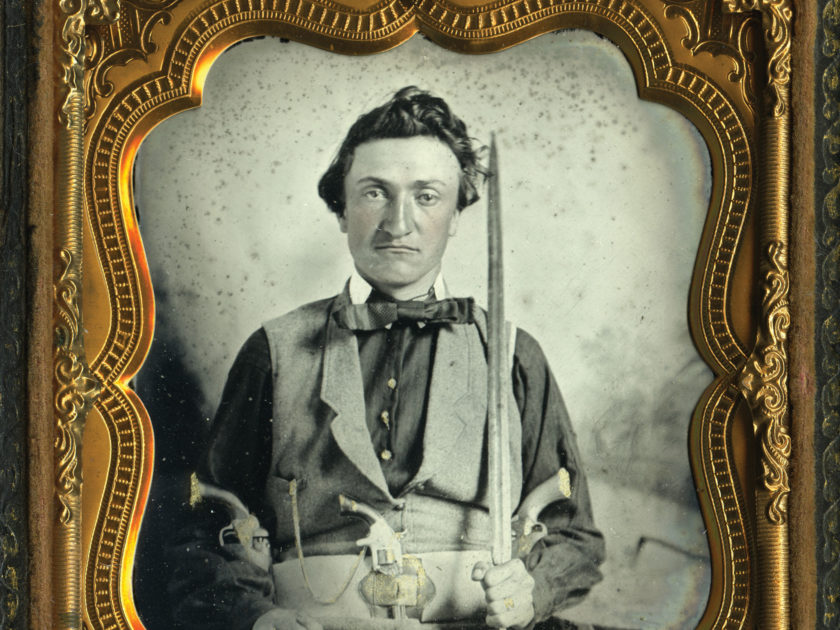
Decked out in English-made accouterments, including a snake buckle and a cap pouch on a cartridge box sling, this soldier grasps an Austrian Lorenz rifle with its rear sight missing. His wrinkled brow, and age lines around his eyes and on his hands, indicate that he was considerably older than the average enlistee.

This Mississippian posed for is portrait early in the war, as evidenced by the state buttons that fasten his non-regulation coat with the prominent shoulder insignia that resembles an oversize federal shoulder strap. The cap is regulation.

In the border state of Kentucky, the war divided families and local populations, as young men chose to enlist in the Union and Confederate armies. This clean-shaven soldier, understood to be from Whitley County in the southeastern part of the state, cast his lot with the Confederacy.

A long-bearded soldier with coarse coat sat for his portrait in the Adams Gallery of Memphis prior to its occupation by Union troops in June 1862. The photographer is likely Dan Adams, who worked in the city through 1861. A note tucked into the case included the surname Leeper. He may be John H. Leeper, a private who served in the 11th Tennessee Infantry, though this regiment was not near Memphis during the war.

The common uniform worn by this soldier is difficult to trace to a specific Southern state. But the numbers and letters affixed to the top of his cap indicate he served in Company F of the 11th Virginia Infantry. The regiment had a distinguished career with the Army of Northern Virginia, including the Battle of Gettysburg, where it suffered 40 percent casualties during Pickett’s Charge. Whether this man participated in and survived the fighting at Gettysburg is a mystery.

This soldier, opposite, presses the blade of his knife against his chest, which may have been done to keep the weapon still while the camera exposure was made. It leaves a lasting impression that he is ready to kill or be killed for his homeland.

A note attached to this portrait speaks to Southern origins: “May the 10th 1861—to my darling Fepot. May the Lord of heaven and earth protect—there is a tide in the affairs of men which taken at the flood leads to fortune. Shall I ever see my darling anymore.” The center gun tucked into his belt is a Smith and Wesson Model 1 rim fire revolver, and the other two appear Colts. The edged weapon in his hand could be a sword missing its handle or a plug bayonet that dates from the 18th century.
SPREAD THE WORD: We encourage you to share this story on social media and elsewhere to educate and raise awareness. If you wish to use any image on this page for another purpose, please request permission.
LEARN MORE about Military Images, America’s only magazine dedicated to showcasing, interpreting and preserving Civil War portrait photography.
VISIT OUR STORE to subscribe, renew a subscription, and more.

